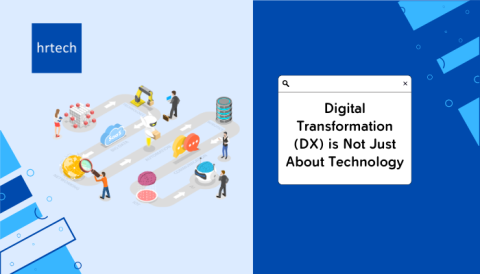The primary advantage of the Gantt Chart lies in its ability to visually represent the progression of activities in a project and production within an industry, providing a simple and intuitive depiction. This feature is particularly beneficial in a HR context, as it facilitates a clear understanding for all stakeholders involved in HR-related tasks.
by hrtech

A Gantt chart is a diagram widely used to show progress in the phases of a project and offers substantial advantages when integrated into Human Resources (HR) practices. These diagrams, with their horizontal bars illustrating task timelines and dependencies, enhance project and workforce management. In the realm of HR, understanding the benefits of Gantt charts becomes pivotal for optimizing processes.
We can also see the relationships between one and the other, and when an action, in order to begin, depends on the completion of the action that precedes it. Using the Gantt chart, creating and managing projects becomes much easier.
What is the Gantt chart, and how did it come about?
The Gantt chart was developed in the 19th century and was designed by Karol Adamiecki. This was the first version, which became known as the Harmonogram and was a document that sought to visually monitor the workflow. However, the Gantt Chart that is still in use today was developed in the 20th century by Henry Gantt of North America, who was influenced by the earlier design. Its function was to avoid delays in factory production systems, helping industrial supervisors.
Presently, this approach is widely embraced not only in project management and production scheduling but also in HR operations across diverse business and industrial sectors. Numerous enterprises have incorporated this model into their practices, recognizing its effectiveness in enhancing efficiency in HR processes.
What are the advantages of using the Gantt chart in HR?
The primary advantage of the Gantt Chart lies in its ability to visually represent the progression of activities in a project and production within an industry, providing a simple and intuitive depiction. This feature is particularly beneficial in a HR context, as it facilitates a clear understanding for all stakeholders involved in HR-related tasks. The visual representation simplifies the comprehension of HR processes, fostering effective communication and collaboration among HR professionals and other team members.
This goal is achieved through bars or lines. They constitute a part of the time and demonstrate the stage of each task and the total period that will be needed to complete the entire project or manufacture of an item.
Below, check out some of its benefits for companies, including Human Resources (HR):
1. Setting Realistic Deadlines in HR Operations:
With an overview of HR activities and the relationships between them, we can effectively determine the deadline for each task. This way, we can work with more realistic deadlines or even reduce them. To achieve this in the HR context, careful attention is required to understand the relationships between tasks.
Identifying tasks that don’t depend on each other allows for strategic adjustments. In HR, if it’s recognized that one task doesn’t rely on another to start, these tasks can be prioritized and moved to the beginning of the project. Moreover, with ample resources, tasks can commence simultaneously, improving overall timing and reducing the delivery time for HR projects.
By integrating HR-specific considerations into the Gantt Chart, this approach not only optimizes deadlines but also enhances the efficiency of HR processes, ensuring a smoother and more timely delivery of HR-related projects.
2. Efficient Task Distribution in HR:
Since the Gantt Chart offers space for controlling various stages of a project, an important feature is the distribution. With the Gantt Chart in HR, it’s like having a super helpful assistant for managing various project stages. In this case, you divide the activities into parts in order to facilitate control. For example, instead of just placing a certain task, it is possible to divide it into smaller parts, making each step of the task be performed individually.
So, in the world of HR, this means we can assign tasks more specifically—each step gets its own moment in the spotlight. Imagine this: everyone on the HR team knows their role, creating this awesome teamwork and crystal-clear plan. The Gantt Chart isn’t your typical tool; it’s more like the MVP, ensuring we’re all on the same page and handling tasks feels like a walk in the park. It’s not just organizing; it’s our magic wand for getting things done with a breeze.
3. Real-time activity monitoring for HR teams:
In the world of HR, the Gantt Chart is your trusty sidekick for keeping tabs on tasks in real time. Imagine having a dynamic tool that lets you peek into the status of HR activities—what’s already been conquered, what’s in the works, and what’s patiently waiting for its turn.
For HR teams, it’s like having a control tower. We get the lowdown on completed tasks, projects in progress, and those that haven’t kicked off yet. This real-time insight simplifies understanding the phase of each HR activity. And if there’s a delay in any stage, no worries! We spot it, analyze the hiccup, and swiftly cook up strategies to keep the HR project moving full steam ahead. It’s all about staying agile, informed, and ready to tackle anything that comes our way on the HR agenda.
4. An intuitive visual reference for HR managers:
The Gantt Chart provides a general and detailed view of all existing requirements in a project. In other words, it provides a detailed visual reference for HR managers and team members to facilitate the assignment of responsibilities for completing activities to everyone involved in the project. This clarity aids in assigning responsibilities and ensuring a smooth workflow.
5. Centralized communication in HR processes:
The Gantt chart’s ability to consolidate complex schedules into a single document streamlines communication within HR teams. This centralized approach enhances understanding, aligns strategies with processes, and fosters efficient collaboration. You can easily understand how your strategies fit into the processes while also knowing the ways in which independent elements come together to complete the project.
We can use Gantt charts to optimize status updates. Thus, simply clarifying the tool’s assumptions provides a simpler visual method, helping to understand the progress of each step.
In conclusion, integrating Gantt charts into HR practices offers a strategic advantage, optimizing task management, enhancing communication, and ultimately contributing to the overall efficiency of HR operations. By leveraging the benefits of this visual tool, HR professionals can navigate project complexities with greater ease, fostering a more streamlined and effective workplace.
About the Author:
Founded in 2018, hrtech is a Singapore-based HRTech Analyst firm dedicated to facilitating Workplace and Workforce Transformations that drive impactful Business and HR outcomes. Our ultimate vision is to empower HR professionals to transform their organizations by seamlessly integrating technology and human-centric approaches.
From our very beginning, we have been committed to building a TECH-DRIVEN and DATA-CENTRIC HR ECOSYSTEM that empowers organizations to achieve successful Workplace and Talent Transformations, while enabling HR teams to evolve into Strategic Business Partners.
At hrtech, we recognize the paramount importance of adapting to the ever-changing demands of the modern workplace. Our unique value proposition lies in automating and digitizing HR processes to initiate a transformative mindset shift. By embracing our ecosystem, organizations can leverage the power of technology to streamline operations, enhance Business and HR productivity and efficiency, elevate employee experiences, and unlock their full potential.
Our comprehensive ecosystem serves as a catalyst for the digital transformation of HR functions, enabling you to optimize efficiency, foster innovation, and cultivate a thriving workforce amidst constant change. To facilitate this transformation and drive organizational success, we operate through our four distinct verticals of Academy, Advisory & Consulting, Marketplace Solutions and Talent OnDemand.





